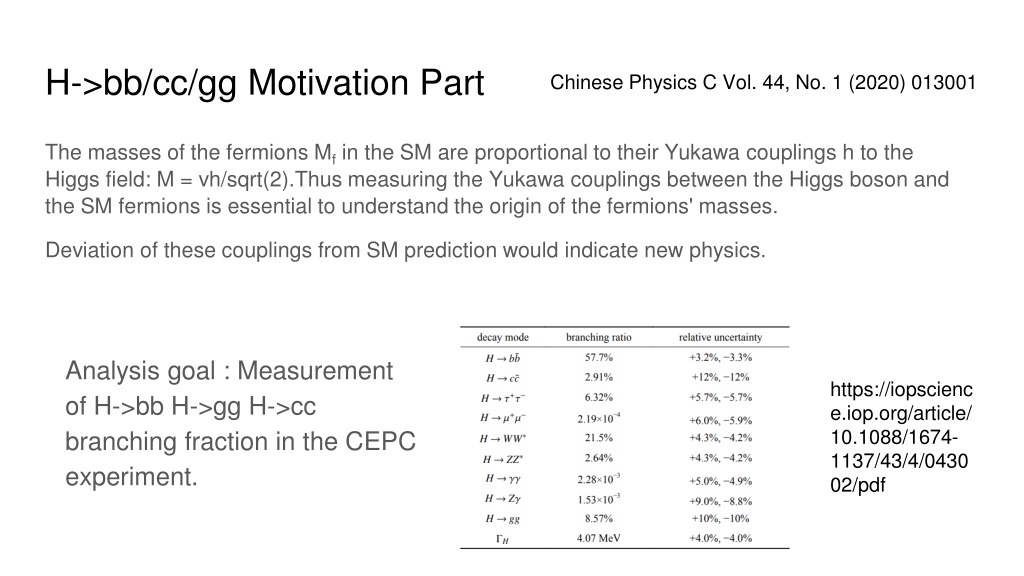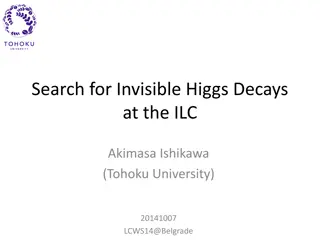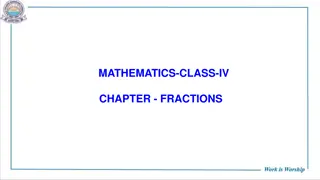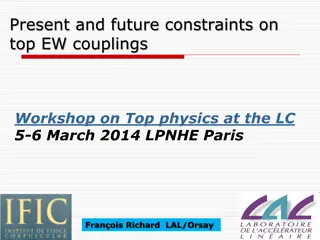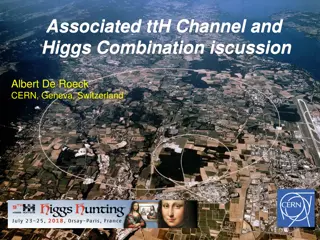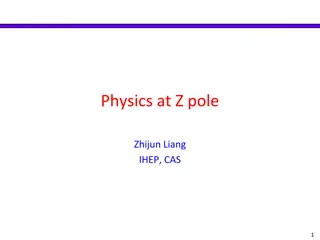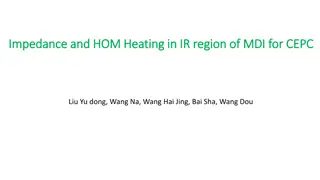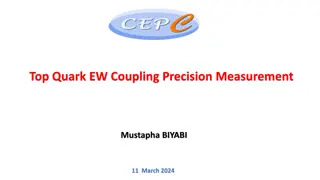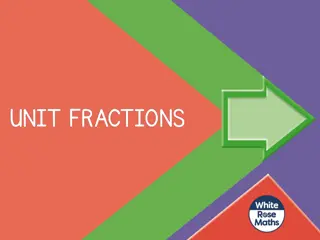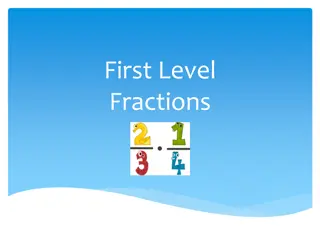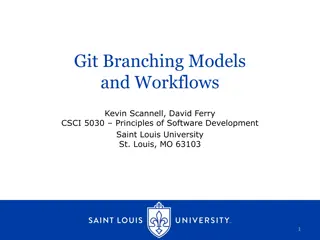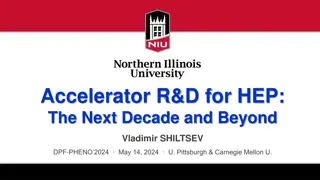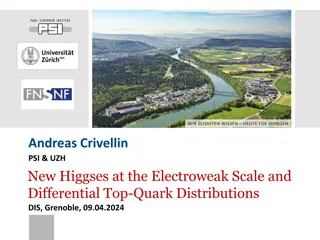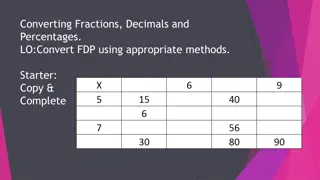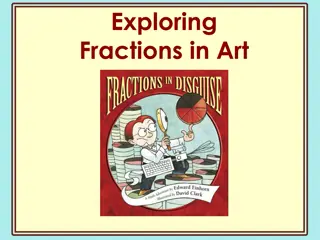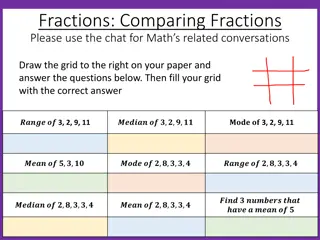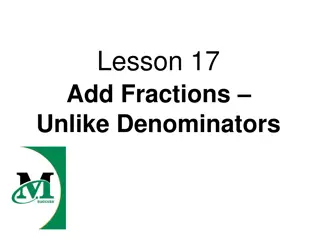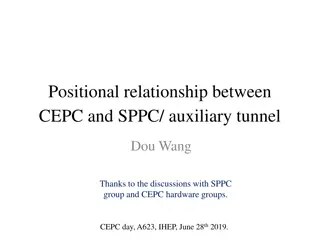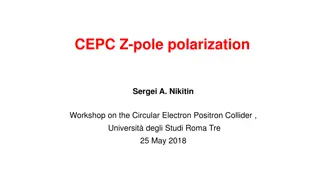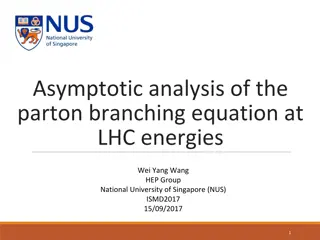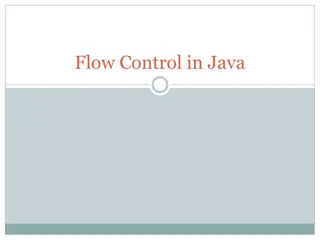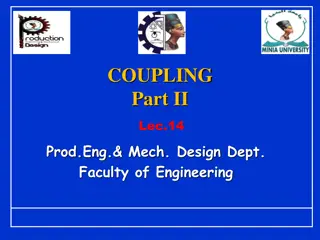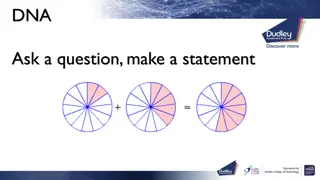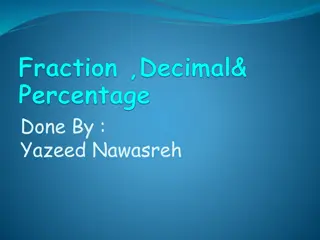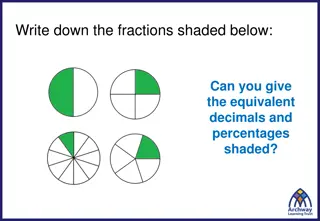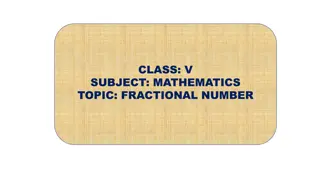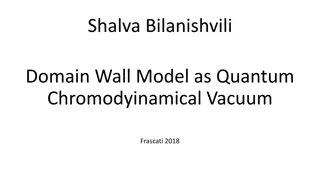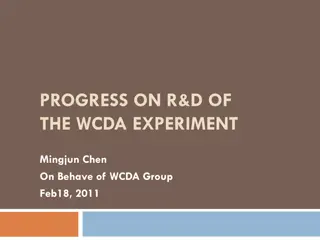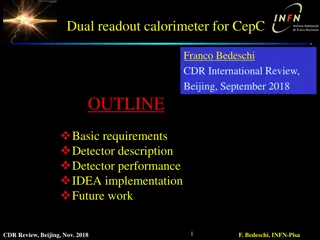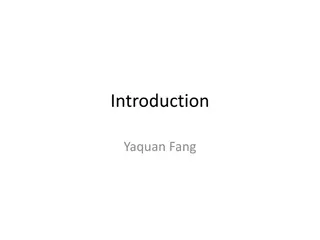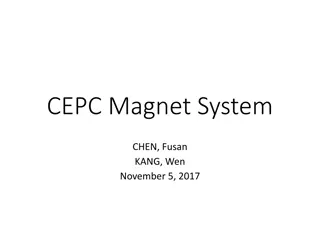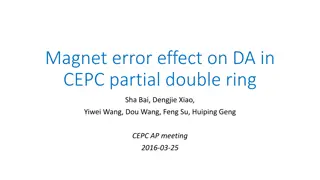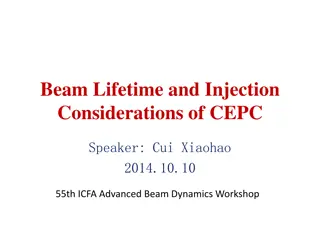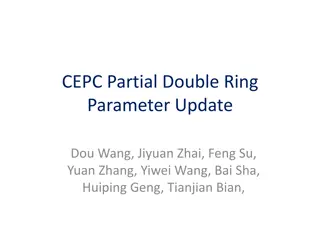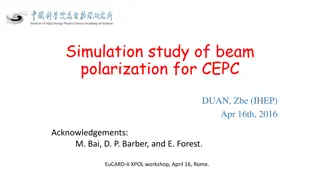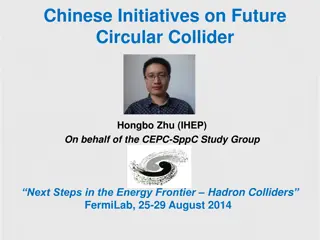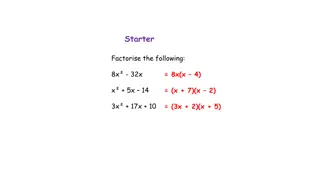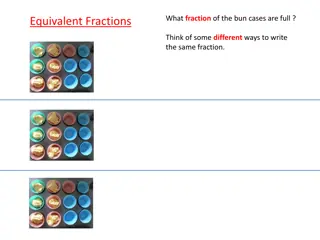Measurement of Higgs Boson Yukawa Couplings and Branching Fractions in CEPC Experiment
The study focuses on measuring the Yukawa couplings between the Higgs boson and Standard Model fermions to understand fermions' masses and potential deviations indicating new physics. The analysis aims to measure Higgs decays to bb, cc, and gg at the CEPC experiment through event selection criteria, cutflow analysis, likelihood fits, and uncertainty assessments using statistical methods.
Download Presentation

Please find below an Image/Link to download the presentation.
The content on the website is provided AS IS for your information and personal use only. It may not be sold, licensed, or shared on other websites without obtaining consent from the author. Download presentation by click this link. If you encounter any issues during the download, it is possible that the publisher has removed the file from their server.
E N D
Presentation Transcript
H->bb/cc/gg Motivation Part Chinese Physics C Vol. 44, No. 1 (2020) 013001 The masses of the fermions Mfin the SM are proportional to their Yukawa couplings h to the Higgs field: M = vh/sqrt(2).Thus measuring the Yukawa couplings between the Higgs boson and the SM fermions is essential to understand the origin of the fermions' masses. Deviation of these couplings from SM prediction would indicate new physics. Analysis goal : Measurement of H->bb H->gg H->cc branching fraction in the CEPC experiment. https://iopscienc e.iop.org/article/ 10.1088/1674- 1137/43/4/0430 02/pdf
H->bb/cc/gg Paper Event Selection Part 1 Signal : 2 SFOS leptons + 2 jets (llH with H->bb/cc/gg) Background : 1.Irreducible : Semileptonic ZZ process (Z1->ll,Z2->qq) 2.Reducible : All the other backgrounds with different final states (hadronic/leptonic WW,hadronic ZZ,llH with other final states, other higgs production process,lepton pair or quark pair) Cuts: 1.lep_energy > 20 GeV, extra isolated lepton veto 2.Polar angle of lepton pair system : |Cos(?)|<0.71(0.81) for ee(??) 3.Angle between the two isolation tracks : Cos >-0.93(-0.74) for ee(??) 4.Mllin Z mass window (77.5~104.5) GeV 5.Polar angle |Cos(?)|<0.96 for jets,jet contains 20 particles at least, each with energy no less than 0.4 GeV (against fake jets from photons or leptons).Mjj should be (75~150) to reject irreducible backgrounds. 6.Higgs mass window is defined by requiring Mll,recoilbetween (124~140) GeV
H->bb/cc/gg Paper Selection Part 2 Event yield of cutflow
H->bb/cc/gg Paper Fit Part 1 A unbinned likelihood fit is performed on three variables : Mll,recoil,XB,XC simultaneously. L the likeness of two individual jets With the overall likelihood function constructed as : The RooFit package is implemented to perform an unbinned likelihood fit to the weighted events
H->bb/cc/gg Paper Fit Part 2 Projection on Mll,recoil, XB, XC. The model describes the data very well
H->bb/cc/gg Paper Uncertainty Part 1 Statistical: 10000 toy MC according to Poisson distribution. Modelling of Mlldistribution: Fit to signal and background dataset respectively. Fixed background: Set H->WW* H->ZZ* yields 5% higher and lower. Vary non-ZZ backgrounds by 100%. Event selection: Extra lepton veto efficiency, jet mass pair resolution
H->bb/cc/gg Paper Uncertainty Part 2 Uncertainty Summary
Current Status Modified Yu Bai s reco-xml to our case, 4jet, 2lep Backgrounds : Inclusive Higgs sample , other 4 fermions background Signal and Background all done for electron channel. Could start to analyze the electron channel once all done Need to generate muon channel as well.
